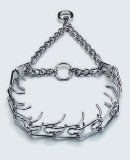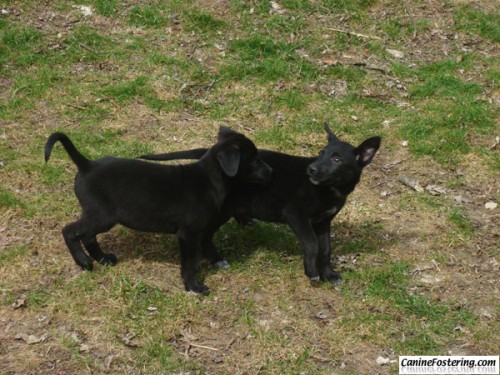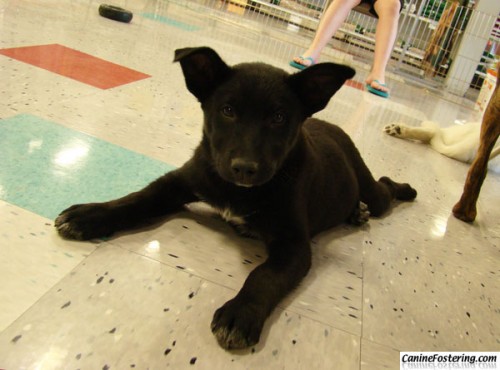Archive for the ‘training’ Category
What to do when dogs jump on guests
The Question: I want to know what the proper way to handle jumping on visitors is. I have been holding him down with his collar, using the other hand in front of his nose and saying “OFF” and it’s not working too well.
I just hate when he jumps on my clients coming in……….
The Answer: I would handle this one of two ways – if you have a client who is ok with it, I would have your dog on leash when they come over. Tell them that he is in training and use that experience to teach him that the right way to great is to sit nicely. Only if he is seated does he get any attention. If he isn’t sitting you have to get him into a sit (or a down is fine) and make him hold that position until you are ready for him to be greeted. And he should hold his sit throughout the greeting. In fact, this is a skill that is tested in the canine good citizen test – sitting nicely while greeted…so it is considered a somewhat advanced skill. If you aren’t sure your client would be ok with part of your attention on your dog, or if you don’t want to do that, then I would crate or somehow separate him during these encounters. Just keep in mind – every time he engages in a behavior you don’t like, he is practicing that behavior. If you can’t get him to practice other ones, then at least stop him from the opportunity to engage in the unwanted behavior.
Thoughts about the Prong Collar
Many many people have very strong feelings about the prong (or pinch) collar. I have to admit it does look like a piece of medieval torture equipment. It looks dangerous and almost violent. But it works like a dream on many many dogs.
Recently, in one of my classes I had a student who also happens to be a working veterinarian, who has a very rambunctious, very strong dog she recently adopted from rescue. She came to class with a head halti, the training device that covers the muzzle of the dog and helps to control the dog’s behavior by controlling their head, much like a bridle works for controlling a horse. While this tool is often very effective for some dogs it was not working for this dog. Her dog was lunging and jerking her all over the ring and the force of all that power was being absorbed by the dog’s neck. It was clear that she was becoming more frustrated and admitted after class that the halti wasn’t working. I suggested trying a prong but said she didn’t want to because she believed prong collars were “inhumane.” In my work as a trainer, I’ve learned that the best tool is the one that addresses the dog’s behavior problem with the least amount of force and that the owner feels comfortable and capable of working with. So, even though it was clear to me that the prong would likely work wonders, I spent time explaining ways she could make the head halti work for her and advised her to be more careful of how she worked with the halti.
The interesting thing is, I believe that she could have had success with my method of working with that tool. But it would have taken a LOT of work on her part to convey to the dog what behaviors were correct and which were not. It seems to me that a lot of dogs really just don’t understand that we’re frustrated with them when we yank them around by their leashes. It almost seems like they think it is a weird game we play. If you ever watch dogs play with each other you know how physical they are, how banging into and grabbing and jostling one another is all part of the fun. I really believe that most dogs being yanked around by their owners think that we’re having fun. To make the halti work for her in this case she had to make it crystal clear what behaviors were unwanted, and what ones were, and most importantly that this wasn’t a game but rather, work. This would take a lot of training sessions with impeccable timing and lots of attention. And frankly, most people want faster results or just don’t have the time to devote to this sort of thing.
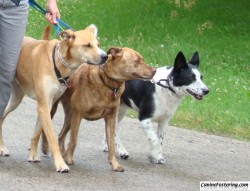 I don’t know what her specific situation is but this week in class she reached a sort of person limit. She was clearly frustrated and the dog was confused. When the handler and dog aren’t working as a team, no learning can happen. I gently suggested she just try out a prong for the class to see if she liked the results, and she agreed.
I don’t know what her specific situation is but this week in class she reached a sort of person limit. She was clearly frustrated and the dog was confused. When the handler and dog aren’t working as a team, no learning can happen. I gently suggested she just try out a prong for the class to see if she liked the results, and she agreed.
The results were, as you’d expect, remarkable. The behavior improved immediately and the handler became more calm, more confident and better able to train the dog. The dog’s focus on the handler improved and there was more eye contact between the two and therefore more opportunities to reinforce the focus and the work. I really watched this team and challenged myself to see if the dog had just “given up” or had lost its spark and was just complying out of fear. I didn’t see that. What I did see was the same dog, just a better, more focused, more self-controlled version. The dog seemed to finally understand the purpose of the whole training thing – it was like her mind said, “OH, that’s what you’re trying to tell me!” And when the handler expressed her pleasure at the dog’s behavior , the dog responded with pleasure right back. That’s the whole point of training in my opinion – to get on the same page with our dogs so we understand each other’s role and what is expected, and we know how to meet those expectations.
Moral to this story? Be careful of dismissing any training method or tool based on a story, a belief or an opinion. Keep your mind open and your focus on exploring what works. Trust your gut, but be honest with yourself. If your way of doing something isn’t working, ask for help and try something outside your comfort zone.
Letter from a frustrated dog owner
Here’s an exchange with a person who I’ve been working with recently to get their dog ready to take the American Kennel Club‘s Canine Good Citizen (CGC) test.
The question:
Kristin,
I’m really frustrated with where we are right now with S’s walking. As long as there are no distractions, he does fairly well. It’s something we could continue to work with. But if there are distractions, it all goes out the window. Last night he saw a squirrel within the first 100 yards and from then on he was pulling at the leash the whole time looking for the next squirrel or rabbit. I had been hoping to have a pleasant walk so I didn’t have any treats with me. But it really wouldn’t have mattered. You can get his attention with a “watch”, depending on how far away the distraction is, but as soon as you reward him for it, he’s back to the distraction.I’m really torn. I’d like to not have to be in training mode every time we go for a walk. Plus, to really do it right, I would need a whole bag of treats and would have to eliminate a meal. But if I don’t work with him, then I feel I’m reinforcing negative actions on his part. And my arm gets tired.
Plus I have no idea how you trained your dogs not to pee or poop on walks. It takes him less than a stride to get all four feet planted and he’s almost immovable then. Any ideas?
T-
And my response:
Dear T-
Not being next to you on the walk makes it hard for me to really get what’s going on. Maybe one of these nice late summer days we could do just that…? But, what you have to do is to keep up with the walking. I agree, treats aren’t really the answer. It is sort of about respect in my opinion…he believes his “work” (hunting critters – his job that he’s assigned himself in lieu of anything else to do) is more important than anything you have to tell him. So, somehow, we’ve got to get across that we have a different job in mind for him, a better one. But until he gets this, really understands this on his doggy level, he just doesn’t see the point in not doing it.
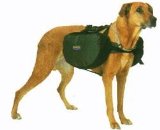 So, sometimes a harsher correction tool can help – a prong/pinch collar helps communicate in no uncertain terms that his behavior isn’t appreciated. The correction makes sense to him and is aversive enough (without being cruel) to get through to him that you want him to stop. Other options include giving him another job while on walks. That’s where a good back pack comes in handy. I recommend dog back packs from RuffWear. They make packs that I’ve seen and used and are acceptable. Fill the pack with up to 20% of S’s body weight and then go for the walk. It is amazing how this can change a dog. Plus, it’s hard to pee with a pack on.
So, sometimes a harsher correction tool can help – a prong/pinch collar helps communicate in no uncertain terms that his behavior isn’t appreciated. The correction makes sense to him and is aversive enough (without being cruel) to get through to him that you want him to stop. Other options include giving him another job while on walks. That’s where a good back pack comes in handy. I recommend dog back packs from RuffWear. They make packs that I’ve seen and used and are acceptable. Fill the pack with up to 20% of S’s body weight and then go for the walk. It is amazing how this can change a dog. Plus, it’s hard to pee with a pack on.
So, try those things. However, your comment about not wanting to be in training mode with each walk is also a clue that you are losing your patience. I hope you come to accept that you kind of do need to always be in training mode when out with your dog. The training gets easier with time, but you can never just check out. It’s sort of like parenting – you’re always on, no matter how old they get. The older they get, the easier and less intensive the work is, but you still are the dad, always. So, try to find a place of acceptance with that fact. So, try to find a place of acceptance with that fact. This doesn’t mean that you have to tolerate a sore arm and a disrespectful dog, but you do have to continue training him his whole life.
Let me know if this helps.
-Kristin
Update from Boomer’s family
Hi Kristin!
Here is a photo from last weekend of Boomer smiling on our bed! He smiles all the time, now. He is doing great and has reached a number of milestones! He has passed the six month age mark, the fifty pound mark and graduated in awesome fashion from his first round of puppy classes!! He is now on week four of “Puppy II” classes and doing fabulously! Everyone wants to know what breed this beautiful dog is! I say I don’t know. Everyone is fascinated and charmed with his big ears. : ) They look like Shepherd ears but I am guessing he also has some cattle dog somewhere in his genetic make up. Thank you for saving him and getting him to us. He is a treasure.
Best, Kathy
Kathy, thanks so much for the photo and update! I love his look!! He looks a lot like my dog Bella who we also think is some sort of Shepherd/Cattle dog mix. He is a lucky dude to have such dedicated pet owners. It makes me smile to see him so happy. Thanks for giving him such a great life!
-Kristin
Snickers and Moonlight have moved on
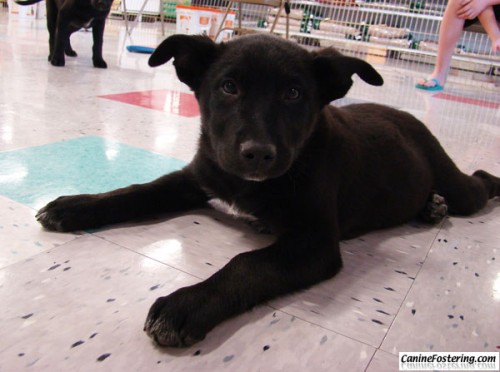 I haven’t written in a long long while. SORRY folks! It has been a bit crazy over here but now I have time to breathe and guess what, the puppies are gone. Snickers and Moonlight turned into such well mannered and happy little guys, thanks to my son’s hard work playing with them. They also left knowing how to walk on a leash, sit and down and even roll over! I don’t usually have time to train my puppies, they leave when they are still babies. So this was extra fun for me. I had some moments of worry that I wasn’t doing right by them – not giving them enough love and attention, but that passed as I saw them growing into such well behaved little dogs. The families that have taken them home have a great start. I hope their lives are wonderful. Bye bye little guys.
I haven’t written in a long long while. SORRY folks! It has been a bit crazy over here but now I have time to breathe and guess what, the puppies are gone. Snickers and Moonlight turned into such well mannered and happy little guys, thanks to my son’s hard work playing with them. They also left knowing how to walk on a leash, sit and down and even roll over! I don’t usually have time to train my puppies, they leave when they are still babies. So this was extra fun for me. I had some moments of worry that I wasn’t doing right by them – not giving them enough love and attention, but that passed as I saw them growing into such well behaved little dogs. The families that have taken them home have a great start. I hope their lives are wonderful. Bye bye little guys.
What to do about dog barking
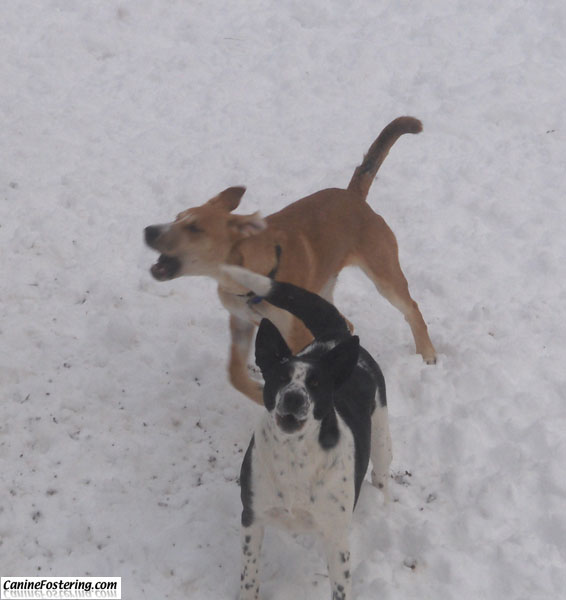 A question comes in on problem barking:
A question comes in on problem barking:
Q: Any suggestion as to how we can work with our dog when she is sitting in our yard, and barking at others who walk pass our house?
A: Barking is self-reinforcing. That means you don’t have to do anything for the behavior to become a habit. That is why bark collars (the citronella and static shock kind) work – they give a negative correction when the bark happens, breaking the habit. But, before deciding on one of those, I like to try to train the dog to “quiet” on command. To do so, you have find a way to encourage them to bark, and name it a command name (like “speak” or “defend”). When you say that command word, knock on the wall or do what it takes to get the dog to bark. Then, after they bark 3 or 4 times, say, “QUIET” and “Watch!” As they turn toward you, give a treat. So you begin to associate “quiet” with a treat. The other thing you can try is to tell her to “leave it” as she is barking and call her to “come“. Once she is next to you, treat her and bring her inside.
Really, most dogs will bark and that is ok – it just becomes a problem when we have no off switch or if the barking becomes excessive – as can be the case for a dog who isn’t getting enough exercise or stimulation. You have to assess the situation and see what applies to you.
